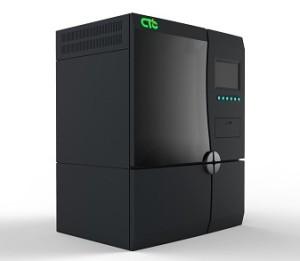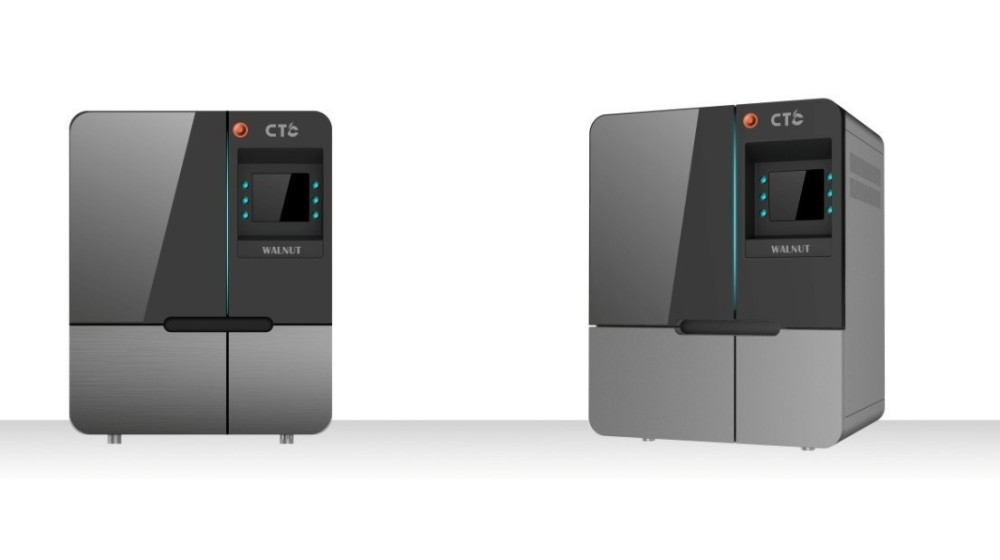 While desktop and hobby applications for 3D printing have long dominated the attention of the industry, that now seems to be shifting, as the desktop market starts to constrict while other applications start to flourish. Even the industry’s largest companies have switched gears as Stratasys begins downplaying the role of MakerBot and 3D Systems is leaving the desktop market altogether. Not only is metal 3D printing the largest, but it is currently the fastest growing segment of the industry. This year, the 3D printing market share of metal 3D printers, mostly units that exceed $300,000, is expected to rise to 27%. The technology is primarily being used in medical and industrial applications, and companies are rapidly adding the technology to their manufacturing and/or prototyping workflow.
While desktop and hobby applications for 3D printing have long dominated the attention of the industry, that now seems to be shifting, as the desktop market starts to constrict while other applications start to flourish. Even the industry’s largest companies have switched gears as Stratasys begins downplaying the role of MakerBot and 3D Systems is leaving the desktop market altogether. Not only is metal 3D printing the largest, but it is currently the fastest growing segment of the industry. This year, the 3D printing market share of metal 3D printers, mostly units that exceed $300,000, is expected to rise to 27%. The technology is primarily being used in medical and industrial applications, and companies are rapidly adding the technology to their manufacturing and/or prototyping workflow.
Despite being one of the world’s largest producers of electronics and a huge manufacturer of industrial equipment, China — and Asia in general — has been pretty slow at joining the 3D printing industry. However, they have quickly been playing catch-up to the West and their share of the overall market is growing at a solid rate. With one exception, so far metal 3D printing has been virtually absent from the Asian 3D printing industry. The region is purchasing metal 3D printers at a rapid rate, but because all of the patents are currently owned by Western companies they have not started developing or manufacturing their own models.
Zhuhai CTC Electronic Co. is about to change that with the impending release of their Walnut family of metal 3D printers. The successful CTC line of desktop FDM 3D printers has already put them on the map, not only throughout Asia where they have enjoyed considerable success, but they are also selling quite well in North America and Europe. Now that they are producing a line of high quality, industrial-grade selective laser melting (SLM)-based metal 3D printers CTC is likely to become the largest 3D printer manufacturer in China. Having just released the Riverbase 500 SLA 3D printer, their first industrial-grade 3D printer, last month, the Walnut line of SLM printers is a huge step forward for the company.
“We are the first and, to date, quite possibly the sole manufacturer in China to have built the dot-scan 3D operating system on our own, and, at variance with other domestic makers, we do not rely on technologies developed by foreign outsourcing firms. SLA and SLM are based on the same software algorithm, enabling rapid research and development,” explained CTC PR Manager Yoyo Hee.
Because most of the technology required to manufacture a metal 3D printer is patented by companies outside of China, the development and licensing costs have been far too high to be viable. For the most part, the Chinese market was happy to ignore the segment because they were both manufacturing a lot of the components used in Western 3D printers while building up their own 3D printing market. But the recent explosion in demand for metal 3D printers is hard to ignore, and it was only a matter of time until China was able to develop their own proprietary metal 3D printing technology. CTC’s Walnut metal 3D printers are the very first to be developed in and for the Chinese 3D printing market.
“As one of the top 3D printing technology suppliers in China, CTC provides customers worldwide with comprehensive solutions encompassing resin, metal, fused deposition modeling (FDM), SLM, desktop and industry-grade. The launch of the CTC Walnut series marks a key step towards realizing our vision,” Hee continued.
CTC’s Walnut SLM metal 3D printers use an infrared high-energy fiber laser and a SCANLAB high-precision scanning galvanometer to print fully solid, precision metal parts from metal powders. Currently Walnut 3D printers are capable of printing with stainless steel, die steel, cobalt-chromium alloy, nickel alloy, aluminium alloy and iron-base alloy materials. However, both the software and the hardware are expandable so it can easily use new materials. The company is currently exploring new metals and metal-based materials that can be used with their printing process. The first line of metal 3D printers will include the Walnut 26, the Walnut 18 and the Walnut 11 models. CTC is expected to release pricing information and more technical details in the coming weeks. What are your thoughts on this new technology? Discuss in the Walnut 3D Metal Printers forum over at 3DPB.com.
Subscribe to Our Email Newsletter
Stay up-to-date on all the latest news from the 3D printing industry and receive information and offers from third party vendors.
You May Also Like
3D Printed Heat Spreader Could Improve Efficiency of Electronics
The low-hanging fruit for decarbonization has long been improving the efficiency of existing systems, hence the justification for LED lights and ENERGY STAR certified appliances. While such minor moves are...
3D Printing News Unpeeled: Marine Gearboxes, 3D Printed Motors and $1.7 Million in Seed Funding
UK based Equipmake just released their Ampere-220 e-axle system. The system, which is meant for high performance electric cars, was similar to one released on the Ariel HIPERCAR. It has...
CEAD Unveils 36-Meter-Long 3D Printer for Abu Dhabi’s Al Seer Marine
CEAD, a Dutch original equipment manufacturer dedicated to large-format 3D printers, has unveiled what it claims to be the world’s largest robotic arm-based 3D printer. At 36 meters long and...
3D Printed Biocomposites Could Help Reduce Marine Plastic Pollution
Concerns about the impact of plastic litter and microplastics in the oceans are at the forefront of environmental study. For decades, the marine environment has suffered from the degradation of...






































